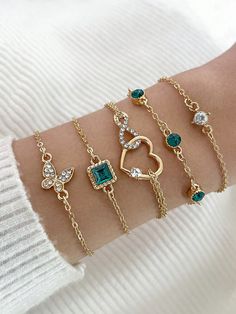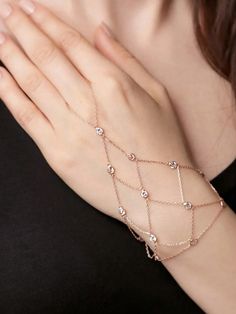Fashion Accessories Hand Design Bracelet
Hand-designed bracelets are more than just decorative pieces; they embody artistry, craftsmanship, and personal expression. As one of the most versatile fashion accessories, bracelets can range from simple bands to intricate statement pieces, each telling a story of its own. This exploration delves into the history, styles, cultural significance, and contemporary trends surrounding hand-designed bracelets in fashion.
Historical Context
Ancient Origins

The history of bracelets dates back to ancient civilizations, where they served not only as adornments but also as symbols of status, protection, and spirituality. Archaeological findings reveal that bracelets made of materials like bone, shell, and metal were worn by early humans. In ancient Egypt, bracelets adorned with hieroglyphs and symbolic motifs signified wealth and power. Similarly, in ancient Rome and Greece, bracelets were crafted from gold and silver, often decorated with precious stones, highlighting the craftsmanship of the time.
Cultural Significance
Across various cultures, bracelets have held distinct meanings. In many Indigenous cultures, bracelets made from natural materials symbolize connection to the earth and ancestors. In Hindu culture, the wearing of bangles is significant during weddings and religious ceremonies, representing fertility and prosperity. These cultural associations underscore the importance of bracelets beyond mere adornment.
The Middle Ages to Renaissance
During the Middle Ages, bracelets often featured intricate designs that incorporated religious symbols, serving as both fashion items and tokens of faith. The Renaissance brought about a revival of classical art, leading to more elaborate designs in jewelry, including bracelets. Jewelers experimented with new techniques and materials, producing exquisite pieces that reflected the artistic sensibilities of the time.
Styles of Hand-Designed Bracelets

The appeal of hand-designed bracelets lies in their diversity. Here are some popular styles:
1. Beaded Bracelets
Beaded bracelets are among the most accessible and versatile designs. They can be made from a variety of materials, including gemstones, glass, and wood. Artisans often combine different colors and shapes, creating unique pieces that reflect personal style. Beaded bracelets can also carry spiritual significance, with specific stones believed to offer various healing properties.
2. Cuff Bracelets
Cuff bracelets are typically rigid and open-ended, allowing for easy wear. They can be simple or elaborately decorated, often showcasing intricate metalwork or embellishments. Cuff bracelets are favored for their bold statement and ability to complement both casual and formal outfits.
3. Charm Bracelets
Charm bracelets are personalized accessories that feature various charms representing significant memories, interests, or milestones. Each charm tells a story, making these bracelets deeply personal. Artisans often craft unique charms from materials like silver, gold, and enamel, allowing wearers to curate their collection over time.
4. Wire-Wrapped Bracelets
Wire-wrapped bracelets are crafted using techniques that involve twisting and wrapping wire around stones or beads. This style offers a handcrafted aesthetic and allows for creative freedom in design. The organic, freeform nature of wire-wrapped bracelets appeals to those who appreciate artisanal craftsmanship.
5. Leather Bracelets
Leather bracelets combine rustic charm with elegance. Handcrafted leather designs can include braiding, stamping, or beading, resulting in unique pieces that age beautifully. Leather bracelets are often associated with bohemian and casual styles, making them a popular choice for everyday wear.
6. Bangle Bracelets
Bangles are circular bracelets that can be worn individually or stacked for a layered look. Handcrafted bangles can feature intricate carvings, enamel work, or inlaid designs. The versatility of bangles allows them to be styled with various outfits, making them a staple in many wardrobes.
Cultural and Personal Significance
1. Symbolism and Rituals
Hand-designed bracelets often carry symbolic meanings. In many cultures, they are given as gifts during significant life events, such as birthdays, weddings, or graduations. The act of gifting a bracelet can signify love, friendship, or support. Additionally, some bracelets are worn as talismans, believed to provide protection or bring good fortune.
2. Personal Expression
For many individuals, bracelets serve as a form of self-expression. The choice of design, materials, and colors reflects personal style and identity. Hand-designed bracelets offer a unique way to showcase creativity, allowing wearers to curate pieces that resonate with their individual aesthetics.
3. Connection to Heritage
Handcrafted bracelets often embody cultural heritage and traditions. Many artisans draw inspiration from their backgrounds, using techniques and motifs passed down through generations. Wearing such pieces can foster a sense of connection to one’s roots and promote cultural appreciation.
The Role of Hand-Designed Bracelets in Contemporary Fashion
1. Fashion Trends

In contemporary fashion, hand-designed bracelets have gained popularity for their uniqueness and individuality. Designers often showcase their artisanal pieces in fashion shows, influencing trends and consumer preferences. The growing demand for distinctive accessories has led to a resurgence of interest in handmade jewelry.
2. Sustainability and Ethical Fashion
With increasing awareness of environmental issues, many consumers are now seeking sustainable fashion options. Hand-designed bracelets made from ethically sourced materials appeal to eco-conscious shoppers. Artisans often prioritize responsible practices, ensuring that their creations contribute positively to the environment and local communities.
3. Customization and Personalization
The trend toward customization has also impacted the bracelet market. Many artisans now offer personalized designs, allowing customers to select materials, colors, and charms that reflect their tastes and stories. This personalized approach fosters a deeper connection between the wearer and the piece.
The Future of Hand-Designed Bracelets
1. Technological Innovations
As technology advances, we may see the integration of innovative materials and techniques in bracelet design. 3D printing and laser cutting are already being used to create intricate patterns and shapes, expanding the possibilities for artisans. These technological advancements could lead to new styles that combine traditional craftsmanship with modern design.
2. Inclusivity in Design
The future of fashion is moving toward greater inclusivity, and hand-designed bracelets are no exception. Designers are increasingly considering diverse body types, cultural backgrounds, and personal styles in their creations. This shift will likely result in a broader range of designs that cater to various tastes and preferences.

3. Cultural Collaborations
Collaborations between artisans and designers from different cultural backgrounds are likely to shape the future of hand-designed bracelets. These partnerships can lead to the fusion of styles and techniques, creating innovative pieces that celebrate diversity while promoting cross-cultural understanding.
Conclusion
Hand-designed bracelets are a vibrant expression of artistry, culture, and personal style. From ancient origins to contemporary trends, they have evolved to become significant fashion accessories that resonate with individuals on multiple levels. Their ability to convey stories, symbolize connections, and reflect personal identity underscores their enduring appeal.
As we move forward, the future of hand-designed bracelets will continue to be shaped by technological advancements, sustainability efforts, and a commitment to inclusivity. Whether worn as a statement piece, a symbol of love, or a connection to cultural heritage, bracelets will remain integral to the fashion landscape, celebrating the artistry of handcrafted jewelry and the uniqueness of individual expression.
